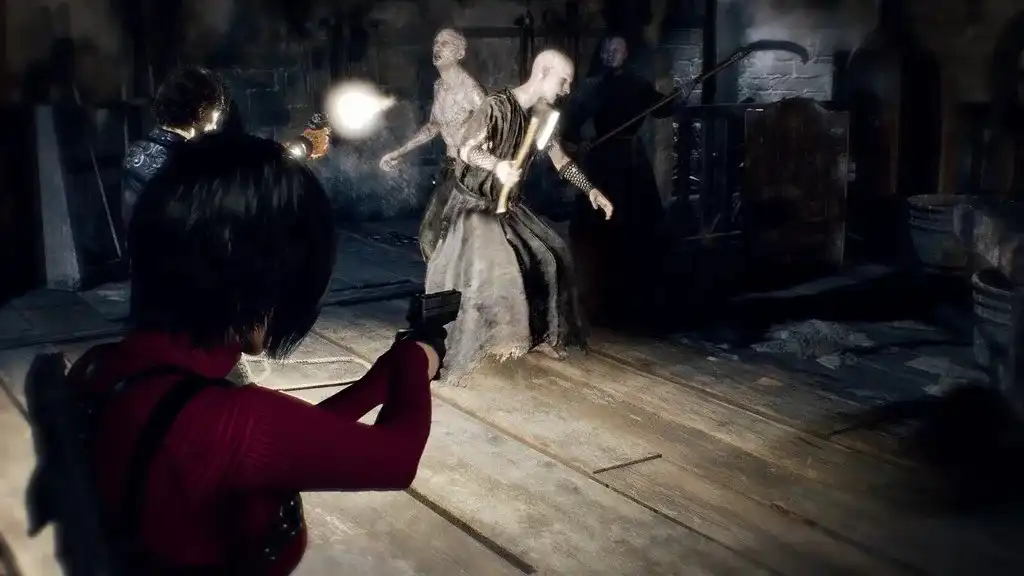Table of Contents
In the new Resident Evil 4 remake, gamers may have a terrible experience if they run into a Fatal D3D Error. This often occurs when you attempt to play a game at graphics levels that it can’t handle. In this comprehensive guide, we’ll examine workable solutions for resolving the D3D issue so you can play games without interruptions.
1. Disable Ray Tracing or FidelityFX Super Resolution
To avoid the D3D problem in Resident Evil 4 Remake, turn off either Ray Tracing or FidelityFX Super Resolution, depending on which graphics card manufacturer (NVIDIA or AMD) your card is made by. NVIDIA’s Ray Tracing technology aims to provide games with more realistic lighting and shadows with the help of RTX GPUs. However, Resident Evil 4 Remake shows how improper use might lead to issues.
After the game launches, go to the Options menu to disable Ray Tracing. Locate and turn off the Ray Tracing option under the Graphics tab. The AMD counterpart is to disable FidelityFX Super Resolution. Usually, this will assist you in locating the D3D error’s cause and resolving it quickly.
2. Reduce Shadow Quality
Another potential source of the D3D issue is the shadow quality choice in Resident Evil 4 Remake. Setting this option to Max may result in frequent crashes and pressure on the system. While developers work on improving the game, users may take matters into their own hands by changing the shadow quality settings.
To achieve this, start the game, choose Options from the menu, and then select the Graphics tab. To move the slider from Max to High or lower, locate the Shadow Quality menu item and use the down arrow. This might be a temporary remedy as the game developers work on further improvements to address the problem.
3. Lower VRAM Usage
If your graphics card’s VRAM (Video Random Access Memory) is being used more than it can handle, you may have a D3D issue. The issue often arises on high-end personal computers and is brought on by specific graphics settings. Go to the Graphics tab after choosing Options from the game’s menu to bypass this.
Choose a lower graphics preset from the Presets menu to minimize VRAM usage. By modifying the Texture Quality setting, you may further minimize VRAM use.
4. Disable Shadow Cache

Resident Evil 4 Remake has a feature called Shadow Cache that allows you to save in-game shadows in your system’s memory. This is intended to improve performance by preventing dynamic shadow loading and storing them in memory; however, if your memory use is very high, it may result in a D3D problem.
Please navigate the Graphics tab in Resident Evil 4 Remake’s Options menu, locate the Shadow Cache option, and turn it off. If the D3D problem is related to your system’s memory use, consider turning it off and see if it resolves it.
5. Remove NVIDIA Freestyle Filters
NVIDIA Freestyle is a function in GeForce Experience that allows you to use post-processing filters to change a game’s appearance in real time. The D3D error might occur from a hacked game, even if the visual quality could increase.
Press ALT + F3 upon game start to open the NVIDIA Freestyle overlay in Resident Evil 4 Remake while utilizing NVIDIA Freestyle filters. By selecting the relevant symbol, you may reverse all of your filter settings.
6. Delete Resident Evil 4 Config
The Resident Evil 4 Remake setup settings are saved in a local file config.ini on your PC. This configuration file is in charge of stopping the D3D error from happening.
Locate the config.ini file by opening File Explorer, going to Documents > My Games > Capcom > RE4 directory, and clicking on it. That ought to resolve the issue. After deleting this file, try to reopen the game to check whether the problem notification still appears.
7. Reinstall Display Drivers
It’s possible that obsolete or broken display drivers are partially to blame for Resident Evil 4 Remake’s D3D issue. A thorough fix for this issue is to replace the display drivers. Use the third-party program Display Driver Uninstaller (DDU) to do this.
Initially, download Display Driver Uninstaller.exe from the official website, unpack the file, and run it. After selecting your GPU brand and clicking Continue on the Options pop-up, you may choose your GPU from the Select device type option. To get rid of the drivers, choose “Clean and restart.” After the computer boom, go to your video card manufacturer’s website to download and install the latest drivers.
8. Clean Boot Your System
A clean boot is a valuable technique to determine whether third-party interference is the source of the D3D issue. These days, many background apps and services operating on desktop PCs might cause issues.
To launch the Run dialog box, press Win + R. Input msconfig. Next, let the window for System Configuration open. Proceed to the Services tab and turn off each service if you want to see third-party offerings. Choose “Hide all Microsoft services” to conceal every Microsoft service. Open Task Manager, go to the Applications folder, and turn off every application. Reboot your computer to identify the program causing interference and do a clean boot.
9. Remove Overclocks
Return your graphics card or CPU to factory settings if everything else doesn’t work. Overclocking components may lead to compatibility issues and D3D errors, especially when playing newer games that might not be compatible with such systems.
Try returning to the factory settings for your clock speeds to see if it helps. Ensure all your hardware runs at factory settings to lessen the chance of Resident Evil 4 Remake incompatibilities.
Conclusion
Resolving the Resident Evil 4 Remake Fatal D3D Error requires a logical and organized strategy. By modifying graphics settings, turning off certain features, verifying system compatibility, and implementing the thorough fixes outlined in this article, players may enhance their gaming experience and wave goodbye to the annoying D3D issue in Resident Evil 4 Remake.
Also Read: Elden Ring DLC Release Date Update And Shadow Of The Erdtree Story

